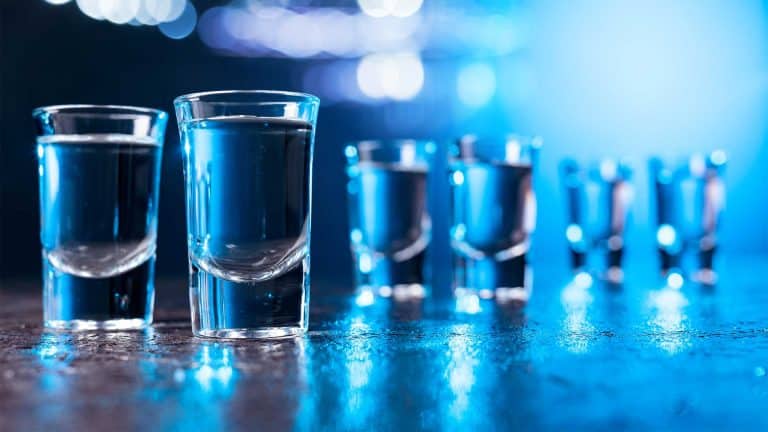Defining “Getting Drunk”

Defining intoxication involves more than just the subjective feeling of being “drunk.” It’s a process of increasing physiological and psychological impairment as blood alcohol concentration (BAC) rises. Understanding the different stages of intoxication is crucial for assessing risk and promoting responsible alcohol consumption.
Intoxication is characterized by a spectrum of effects, ranging from mild impairment to severe consequences. The specific effects and their severity depend on several factors, including individual differences in metabolism, tolerance, and body composition. Moreover, the presence of other substances can significantly alter the effects of alcohol.
Levels of Intoxication
The degree of impairment correlates with the blood alcohol concentration (BAC). Mild intoxication typically involves a noticeable loosening of inhibitions, lightheadedness, and some impairment of judgment. Moderate intoxication is characterized by more significant impairment in coordination, speech, and motor skills. Severe intoxication can lead to loss of consciousness, vomiting, and potentially life-threatening complications. It’s crucial to recognize the signs and symptoms of intoxication at each level to prevent negative outcomes.
Factors Influencing Intoxication
Various factors influence how quickly and intensely someone becomes intoxicated. Body weight plays a significant role, as larger individuals generally need to consume more alcohol to reach the same BAC as smaller individuals. Gender differences also exist; women tend to metabolize alcohol less efficiently than men, leading to a faster increase in BAC for the same amount consumed. Individual metabolism rates can also vary greatly, affecting the rate at which alcohol is processed by the body. Tolerance to alcohol, developed through regular consumption, can also influence the effects. An individual with a high tolerance may consume more alcohol before reaching the same level of impairment as someone with a lower tolerance.
Experiences of Intoxication
Intoxication manifests in various ways, both physically and psychologically. Physical effects include slurred speech, unsteady gait, and impaired motor skills. Psychological effects can range from euphoria and disinhibition to aggression, anxiety, and depression. The experience is highly individualistic, influenced by personality and context.
Mixing Alcohol with Other Substances, How many shots does it take to get drunk
Combining alcohol with other substances, including medications, drugs, and even certain over-the-counter medications, can significantly amplify or alter the effects of alcohol. This interaction can lead to unpredictable and potentially dangerous consequences, including increased risk of accidents, severe health complications, and overdose. Always exercise caution when consuming alcohol with other substances.
Individual Differences in Alcohol Response
People respond to alcohol in unique ways. Factors like genetics, overall health, and previous experiences can influence how an individual metabolizes and reacts to alcohol. One person may feel intoxicated after a single drink, while another may consume multiple drinks without experiencing significant impairment. Understanding these individual variations is crucial for safe and responsible alcohol consumption. It’s important to note that no single individual is entirely representative of a population’s alcohol response.
Factors Affecting Intoxication Rate: How Many Shots Does It Take To Get Drunk

Understanding how quickly someone becomes intoxicated is crucial for responsible drinking. Various factors influence the body’s response to alcohol, making it impossible to predict intoxication with complete accuracy. These factors interact in complex ways, impacting the rate and degree of intoxication.
Alcohol concentration in beverages plays a significant role in determining the intoxication rate. Higher alcohol content naturally leads to quicker intoxication. A drink with a higher percentage of alcohol will result in a faster onset of effects. For instance, a 15% ABV drink will affect a person faster than a 5% ABV drink, assuming equal quantities consumed.
Alcohol Concentration in Beverages
Different alcoholic beverages contain varying concentrations of alcohol. This difference in alcohol content directly affects the rate at which intoxication occurs. A standard drink of beer, wine, or liquor will have different alcohol by volume (ABV) percentages. Understanding the ABV of a beverage is essential for calculating the total amount of alcohol consumed and, therefore, the expected impact on intoxication.
Impact of Drinking Speed
The speed at which alcohol is consumed significantly impacts the rate of intoxication. Rapid drinking overwhelms the body’s natural processes for metabolizing alcohol, leading to a quicker rise in blood alcohol content (BAC). A person drinking multiple shots in a short period will experience intoxication faster than someone who drinks the same amount of alcohol over a longer period. This difference is due to the body’s ability to process alcohol at a specific rate.
Importance of Food Consumption
The presence of food in the stomach before and during drinking significantly slows down alcohol absorption. Food creates a barrier, reducing the rate at which alcohol enters the bloodstream. Consuming food with alcohol slows the process of alcohol entering the bloodstream. For example, a person who eats a meal before and during drinking will likely become intoxicated slower than someone who drinks on an empty stomach.
Effects of Different Types of Alcoholic Drinks
Different types of alcoholic beverages, while containing varying amounts of alcohol, can have different effects on intoxication. The presence of other substances, like congeners, in certain beverages might influence the intensity of the effects. This effect can vary significantly based on the type of alcoholic drink consumed. For instance, some liquors have a higher concentration of congeners than others, potentially leading to a more pronounced hangover.
Role of Individual Factors
Individual factors such as body size, metabolism, and overall health play a crucial role in determining how quickly someone becomes intoxicated. Smaller individuals will generally reach a higher BAC faster than larger individuals for the same amount of alcohol consumed. Furthermore, an individual’s metabolic rate influences how quickly the body processes alcohol. An individual with a faster metabolism might experience a quicker decrease in BAC compared to someone with a slower metabolism. Health conditions, including liver conditions, can also significantly impact alcohol metabolism.
Comparison of Alcohol Content in Various Drinks
| Drink Type | Standard Drink Size (oz/mL) | Alcohol Content (ABV %) |
|---|---|---|
| Beer (Lager) | 12 oz (355 mL) | 5% |
| Wine (Red) | 5 oz (148 mL) | 12% |
| Wine (White) | 5 oz (148 mL) | 11% |
| Liquor (Whiskey) | 1.5 oz (44 mL) | 40% |
| Liquor (Vodka) | 1.5 oz (44 mL) | 40% |
Note: These are approximate values and may vary depending on the specific brand and type of beverage. The table illustrates the significant variations in alcohol content across different drinks.
Estimating the Number of Shots

Estimating the number of alcoholic beverages required to reach a particular blood alcohol content (BAC) is a complex process. It depends on numerous individual factors, including body weight, gender, metabolism, and the presence of food in the stomach. There’s no single answer to how many shots it takes to get drunk, as individual responses vary widely.
Accurate estimations require understanding standard drink sizes, alcohol content, and the interplay of these factors with individual physiology. A crucial aspect is acknowledging that self-assessment of intoxication is often unreliable. While this section provides a framework for estimation, it’s vital to prioritize responsible consumption and seek professional guidance when necessary.
Standard Drink Sizes
Understanding standard drink sizes is fundamental for calculating the number of drinks consumed. Different sizes of drinks vary, and a standard drink contains a specific amount of pure alcohol. This consistency is essential for comparative analyses.
| Drink Type | Standard Size (Approximate) |
|---|---|
| Shot | 1.5 fluid ounces (44 ml) |
| Wine (5 oz glass) | 5 fluid ounces (148 ml) |
| Beer (12 oz bottle/can) | 12 fluid ounces (355 ml) |
| Mixed Drinks (Cocktail) | Variable; check ingredients and recipe |
Alcohol Content per Drink
The percentage of alcohol in each drink type plays a crucial role in determining the overall alcohol intake. Different types of alcoholic beverages have varying alcohol content.
| Drink Type | Alcohol Content (Percent ABV) |
|---|---|
| 80 Proof Vodka | 40% |
| 80 Proof Rum | 40% |
| 80 Proof Whiskey | 40% |
| Wine (Varied) | 11-15% |
| Beer (Varied) | 4-6% |
Estimating BAC
To estimate the number of shots needed to reach a specific BAC, several factors must be considered, and individual responses vary significantly. There is no universal formula. Online BAC calculators are available but should be used with caution.
A reliable method to estimate the number of standard drinks needed to reach a particular BAC involves considering individual factors like body weight, gender, metabolism, and the presence of food.
A general guideline for estimating the number of standard drinks to reach a particular BAC involves using the following formula, but remember this is only a rough estimate and individual results vary:
Number of standard drinks = (BAC desired * weight in kg) / (0.68 * (gender factor))
Where:
* BAC desired is the desired blood alcohol content.
* Weight in kg is the individual’s weight in kilograms.
* Gender factor: 0.7 for females, 0.8 for males.
Calculating Standard Drinks
To calculate the number of standard drinks consumed, multiply the volume of each drink by its alcohol percentage. For example, a 1.5-ounce shot of 40% alcohol contains 0.6 ounces of pure alcohol. This equates to approximately 0.6/1.5 = 0.4 standard drinks.
Misconceptions about Shots and Intoxication
A common misconception is that shots lead to faster intoxication than other types of drinks. The speed of intoxication depends more on the overall alcohol consumed and individual factors than on the type of drink. The combination of factors like the amount of food in the stomach and the rate of consumption significantly influence the experience of intoxication.
Risks and Consequences of Excessive Drinking
Excessive alcohol consumption carries significant short-term and long-term health risks. Understanding these risks is crucial for making informed decisions about alcohol intake. Irresponsible drinking can lead to a range of negative consequences, impacting not only personal well-being but also relationships and societal structures.
Excessive alcohol use can have devastating effects on physical and mental health. The immediate and long-term consequences can be severe and even life-threatening. Understanding these implications is paramount to promoting responsible alcohol consumption habits.
Short-Term Risks
Excessive alcohol consumption in the short term can lead to a variety of immediate health problems. These problems often manifest quickly after a period of heavy drinking. These include impaired judgment, coordination, and reaction time. This can have serious consequences in situations requiring alertness and coordination, like driving.
- Impaired Judgment and Decision-Making: Alcohol significantly impairs the ability to make sound judgments and decisions. This can lead to risky behaviors, such as engaging in unsafe sexual encounters or making impulsive financial decisions.
- Coordination and Balance Issues: Alcohol disrupts the central nervous system, leading to problems with coordination and balance. This can result in falls, accidents, and other injuries.
- Increased Risk of Violence: Alcohol can contribute to aggressive behavior and violence. This is often due to impaired judgment and reduced inhibitions.
- Vomiting and Dehydration: Excessive alcohol consumption can lead to nausea, vomiting, and dehydration. These can be dangerous, particularly in extreme cases.
Long-Term Risks
Chronic alcohol abuse can have devastating long-term consequences, impacting various aspects of health and well-being. These risks extend far beyond the immediate effects and can significantly impact quality of life.
- Liver Disease: Excessive alcohol consumption can lead to fatty liver disease, alcoholic hepatitis, and cirrhosis. These conditions can impair liver function and even be life-threatening.
- Cardiovascular Problems: Regular heavy drinking can raise blood pressure, increase the risk of heart disease, and lead to stroke.
- Cancer: Studies have linked excessive alcohol consumption to an increased risk of various types of cancer, including cancers of the mouth, throat, esophagus, liver, breast, and colon.
- Mental Health Issues: Chronic alcohol abuse can exacerbate or trigger mental health conditions like depression, anxiety, and psychosis.
Impact on Driving and Other Activities
Alcohol significantly impairs driving ability. The effect of alcohol on reaction time and judgment makes operating a vehicle extremely dangerous. It also affects performance in other activities, such as work and social interactions.
- Impaired Driving: Alcohol substantially reduces reaction time and impairs judgment, increasing the risk of accidents and fatalities. Driving under the influence is a serious offense with severe consequences.
- Reduced Work Performance: Excessive alcohol consumption can lead to decreased productivity, poor concentration, and absenteeism at work.
- Social Interactions: Alcohol can affect social interactions, potentially leading to misunderstandings, conflicts, and strained relationships.
Social and Legal Implications
Excessive alcohol consumption has profound social and legal consequences. It can damage relationships, lead to legal troubles, and strain societal resources.
- Relationship Strain: Chronic alcohol abuse can strain personal relationships, leading to conflicts, misunderstandings, and estrangement.
- Legal Issues: Driving under the influence of alcohol is a serious crime with severe penalties, including fines, jail time, and loss of driving privileges.
- Strain on Societal Resources: Excessive alcohol use can place a burden on healthcare systems, law enforcement agencies, and social welfare programs.
Binge Drinking vs. Moderate Drinking
Binge drinking carries a significantly higher risk of adverse health outcomes compared to moderate drinking. The immediate and long-term consequences of binge drinking are often more severe and frequent.
| Characteristic | Binge Drinking | Moderate Drinking |
|---|---|---|
| Definition | Consuming a large amount of alcohol in a short period, typically 4 or more drinks for women and 5 or more drinks for men in about 2 hours. | Consuming alcohol in moderation, typically defined as up to one drink per day for women and up to two drinks per day for men. |
| Short-Term Risks | Higher risk of alcohol poisoning, accidents, violence, and other health problems. | Lower risk of short-term health problems. |
| Long-Term Risks | Higher risk of chronic diseases and other health complications. | Lower risk of chronic diseases, but still some risk if consumed excessively. |
Safe Drinking Practices

Responsible alcohol consumption is crucial for personal well-being and preventing negative consequences. Understanding and adhering to safe drinking practices can significantly reduce the risks associated with excessive alcohol intake. This involves more than just knowing how many drinks it takes to get drunk; it’s about mindful choices and a commitment to personal safety.
Responsible drinking habits are essential for maintaining a healthy lifestyle and preventing alcohol-related problems. This includes recognizing personal limits, understanding the effects of alcohol on the body, and prioritizing one’s well-being over the pursuit of intoxication.
Importance of Responsible Drinking Habits
Responsible drinking is not just about avoiding getting drunk; it’s about consuming alcohol in a way that minimizes potential harm to oneself and others. This includes awareness of the individual’s body’s reaction to alcohol, the environment, and the presence of others. Consistent responsible drinking choices contribute to overall health and well-being.
Designated Drivers
A designated driver (DD) is a person who chooses not to drink alcohol and is responsible for ensuring that others who do drink can get home safely. This practice is crucial for preventing drunk driving accidents and ensuring the safety of everyone involved. A DD plays a vital role in social gatherings and events where alcohol is consumed, ensuring that those who have consumed alcohol are able to return home safely and responsibly.
Strategies for Avoiding Excessive Alcohol Consumption
Several strategies can help individuals avoid excessive alcohol consumption. These strategies include setting clear limits, planning ahead, and making conscious choices about alcohol intake. Understanding personal tolerance and recognizing the effects of alcohol on the body are crucial steps in managing consumption. It’s important to remember that alcohol’s impact varies greatly among individuals.
Setting Limits and Listening to Your Body
Establishing personal limits is a critical step in responsible drinking. Understanding your body’s response to alcohol is essential for avoiding overconsumption. Pay close attention to the physical and mental effects alcohol has on you. This allows you to recognize your personal limits and avoid potentially harmful situations. For example, some individuals may experience dizziness or impaired judgment at lower alcohol levels than others.
Resources for Help with Alcohol Abuse
Numerous resources are available for individuals struggling with alcohol abuse or addiction. These resources provide support, guidance, and treatment options to help individuals overcome their challenges and regain control of their lives. Seeking professional help is a sign of strength, and it’s an important step towards recovery.
- Alcoholics Anonymous (AA): A support group offering guidance and support for those struggling with alcohol addiction.
- National Institute on Alcohol Abuse and Alcoholism (NIAAA): Provides research-based information, educational materials, and resources on alcohol use and abuse.
- National Council on Alcoholism and Drug Dependence (NCADD): Offers support, treatment, and advocacy for individuals and families affected by alcohol and other drug use disorders.
- SAMHSA National Helpline: A confidential resource providing information on substance use treatment facilities and services.
The above resources can provide essential guidance and support for those seeking assistance with alcohol abuse.
Signs of Alcohol Poisoning
Recognizing the signs of alcohol poisoning is crucial for preventing potentially life-threatening consequences. Prompt intervention can save lives. Alcohol poisoning is a serious medical emergency.
- Confusion or disorientation
- Vomiting
- Slowed breathing
- Irregular heartbeat
- Pale or bluish skin color
- Loss of consciousness
If someone displays these symptoms, seek immediate medical attention. Time is of the essence in these situations.
Illustrative Examples
Understanding how individual factors influence intoxication is crucial. Different scenarios, from casual gatherings to celebrations, involve varying levels of alcohol consumption and potential consequences. Analyzing these situations allows for a better comprehension of the complexities of alcohol intake.
Social Gathering Scenarios
Social gatherings often involve a relaxed pace of drinking, allowing the body to metabolize alcohol more efficiently. Guests may engage in conversation and activities, further reducing the rate of alcohol absorption. If the event includes a variety of food options, the rate of intoxication may be slower. The consumption of food alongside alcohol can significantly slow the absorption of alcohol into the bloodstream, reducing the impact of the consumed quantity.
Celebration Scenarios
Celebrations can involve more significant quantities of alcohol and a faster pace of drinking, particularly when there’s excitement and merriment. The atmosphere often contributes to the desire for increased consumption, potentially leading to a faster rate of intoxication. The lack of food or a slower pace of consumption can result in a more rapid increase in blood alcohol content (BAC).
Case Study: Rapid Alcohol Consumption
Imagine a young adult at a party who decides to drink rapidly, consuming several shots in a short period. Without food in their system and a lack of time for alcohol metabolism, their BAC rises quickly. This rapid rise can lead to noticeable impairment, such as slurred speech, impaired coordination, and potentially more severe consequences if they continue to consume alcohol at that pace. Rapid alcohol consumption can also increase the risk of alcohol poisoning, a life-threatening condition.
Impact of Food Consumption
The presence of food in the stomach significantly impacts alcohol absorption. Food acts as a barrier, slowing the rate at which alcohol enters the bloodstream. A person consuming alcohol with a substantial meal will likely experience a slower rise in BAC compared to someone consuming the same amount of alcohol on an empty stomach. The type of food consumed also matters; high-fat foods can further slow absorption.
Hypothetical Scenario: Limiting Alcohol Intake
A person attending a wedding reception wants to limit their alcohol intake. They can plan to alternate alcoholic drinks with non-alcoholic beverages. They can also ensure that they consume food alongside their drinks. They can strategically space out their drinks, allowing for more time for the body to metabolize the alcohol. Knowing their tolerance and limiting the number of drinks they have, can assist in limiting the impact of the alcohol.
Alcohol Type Variations
Different types of alcoholic beverages have varying alcohol content (ABV). A higher ABV means a greater concentration of alcohol, potentially leading to a faster rise in BAC. For instance, a shot of hard liquor has a higher ABV compared to a glass of wine or beer. Consequently, a larger amount of alcohol will be consumed from the same volume of a higher ABV beverage.
Visual Representation: BAC and Drinking Speed
A graph depicting the relationship between drinking speed and BAC would show a steeper upward trend for faster drinking rates. A gradual consumption pattern will exhibit a more gradual increase in BAC. This visual representation clearly demonstrates the importance of consuming alcohol at a measured pace to avoid rapid intoxication.
Estimating Appropriate Drinking Limits
By understanding their individual tolerance, the alcohol content of drinks, and the pace of consumption, individuals can estimate appropriate drinking limits. They should consider their personal health status, the type of drinks they are consuming, and the presence of food. Combining these factors with their individual body chemistry and response to alcohol consumption, can lead to a more personalized and safe approach to alcohol consumption.
FAQ Overview
How many shots does it take to get drunk – What is a standard drink?
A standard drink typically contains 14 grams of pure alcohol. This amount is found in different types of beverages. Understanding this helps in estimating alcohol intake.
Can food prevent intoxication?
Yes, consuming food before and during drinking slows the absorption of alcohol into the bloodstream, which can lessen the effects of intoxication.
What is the legal limit for driving?
The legal limit for driving varies by location, but it’s generally 0.08% BAC. Exceeding this limit is illegal and dangerous.